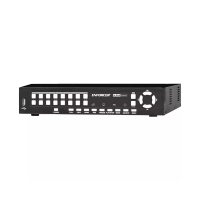10
ENFORCER Vandal Resistant Access Control Keypads
SECO-LARM U.S.A., Inc.
Getting Ready to Program:
Sample Applications (cont.):
Codes and/or Cards*:
The keypad can be set to be activated by users in one of three ways:
1. Keypad code only – There are ve types of keypad codes:
• Master code – Used only for entering programming mode; there can be only one master
code per keypad.
• Super user code – Can be used to activate outputs #1 or #2 to disable (inhibit) or enable
the operation of the outputs.
• User codes – Unique codes for each user to activate outputs #1 or #2.
• Visitor codes – Temporary user codes that can be assigned to visitors or temporary
workers to activate output #1; the visitor codes can be programmed for one-time use or
to expire after a set number of hours has passed.
• Duress codes – Assigned to specic users as a way to send a silent alert if forced to use
the keypad under duress.
2. Proximity card only* – Standard 125kHz (EM125) proximity cards can be used to activate
output #1 or output #2.
3. Card/fob* + code – For enhanced security, the user can be required to also enter a code after
tapping a proximity card/fob. The code may be unique to each card or to a group of users, or a
common code can be used with all cards.
Security Levels:
There are four possible security levels for the keypad:
1. Card only* – The most basic, convenient level of security. Hold a previously-programmed
proximity card over the keypad to activate outputs #1 or #2 (see “Programming User Codes
and Proximity Cards” on pages 16~17).
Door-Hold-Open Mode:
1. For N.C. locking devices, connect outputs
in series with working device.
2. For N.O. locking devices, connect outputs
in parallel with locking device.

